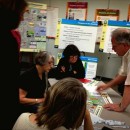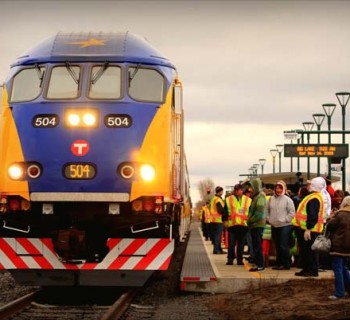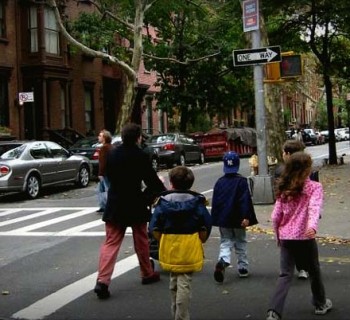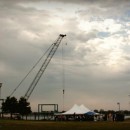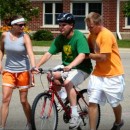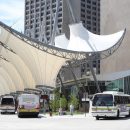A U.K. report on investment in walking environments adds support for Michigan’s initiative on complete streets. The report, “Making the Case for Investment in the Walking Environment: A review of the evidence,” is published by the University of the West of England, Bristol, and Cavill Associates.
Based on a review of European and North American evidence, the report claims investment in making places more walkable could be a better value than investment in any other type of transportation. This is, in part, because environmental investments to encourage more walking have a wider range of beneficial impacts, which include:
- Reduced road collisions
- Reduced congestion, fuel and other costs
- Reduced noise and air pollution
- Reduced carbon dioxide emissions
- Reduced public costs of providing transport infrastructure and services
- Increased economic activity
- Health benefits from a more physically active population
This diagram from the report shows the relationships between investments in the walking environment and their benefits.

There are highlights of the kinds of environmental interventions used to encourage walking, such as mixed priority routes, traffic calming, speed limit areas and zones, and shared use paths. Similar interventions are being considered to encourage walking along Woodward Avenue in Detroit.
The Woodward Avenue Action Association is spearheading the development of a Complete Streets Master Plan for Woodward. The vision is to transform the 27 mile Woodward corridor from a four-lane auto-centric highway to a safer and more inviting path for non-motorized travel by people of all ages and abilities.
Walkability expert Dan Burden remarked that “The Woodward Avenue Complete Streets master plan ... could be the single largest Complet Streets planning effort ever undertaken in north America.”
Among the desired outcomes for the Woodward Complete Streets initiative are to:
- Lower transportation costs for families
- Foster strong communities
- Improve safety
- Support economic competitiveness, growth and business investment opportunities
- Improve property values
According to the U.K. report, all of these outcomes are likely if the interventions increase walking along Woodward. For example, the report claims “There are ... a number of characteristics of existing urban environments that encourage walking. These tend to be places that are higher density, well connected, mixed use, and attractive (high quality).”
Making sure the environment along Woodward is well connected and functional for all modes of transportation will require strong collaboration between residents, designers and policy makers.
For that reason, the Woodward Complete Streets design team includes representatives and policy makers from Wayne and Oakland counties, the 11 municipalities along Woodward, MDOT, M1 Rail, SEMCOG and cycling advocacy groups.
The design team is engaging residents and the general public to share their ideas and feedback on the plan that’s forming. There are public workshops with the Woodward Complete Streets designers in June that are free and open to the public. No advanced registration required.
By the fall, a Woodward Complete Streets draft plan will be unveiled for public review. The plan should provide a range of low to high cost options and potential methods for funding. According to the U.K. report, a successful implementation of any plan that encourages more walking means a healthier and wealthier Detroit.
Be sure to join one or all of the complete streets planning meetings in Detroit this week.



